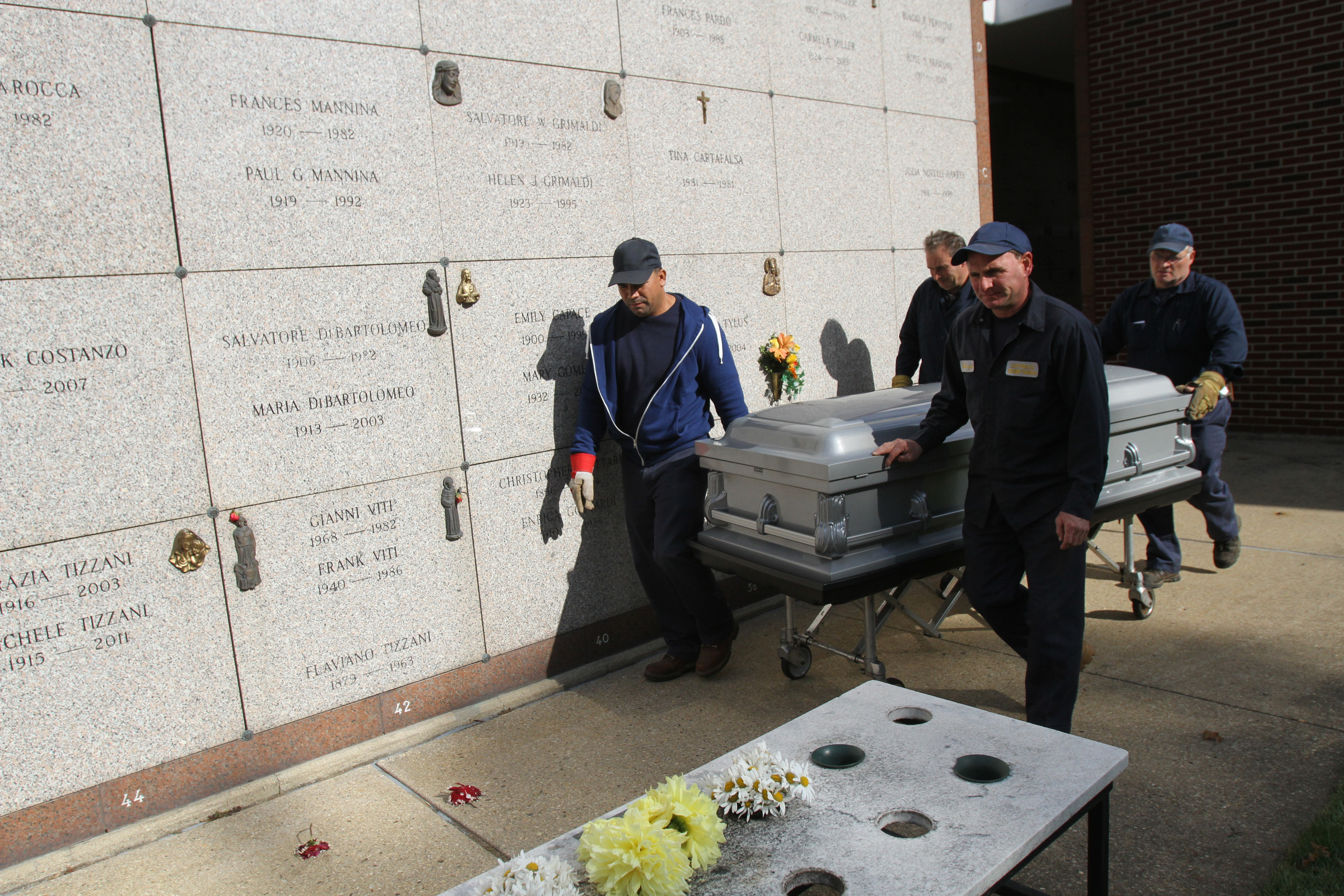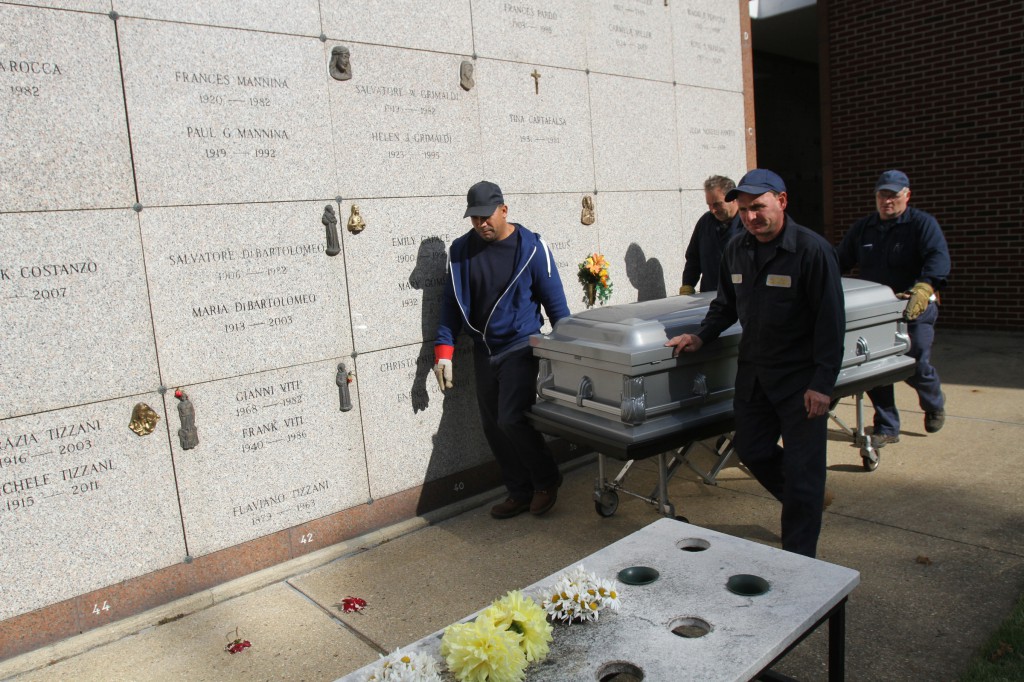
RYE, N.Y. (CNS) — Beyond their traditional roles as predictably quiet and often-beautiful places, “cemeteries have a huge opportunity to evangelize and a responsibility to stand for what the church represents,” said Andrew Schafer, executive director for Archdiocese of Newark Catholic Cemeteries in New Jersey.
People who come to a committal service in a cemetery may be encountering Catholic funeral tradition for the first time, or for the first time in many years, and a positive experience might encourage them to return when they need to arrange a burial, Schafer said.
Catholic cemeteries have lost 1 percent of their potential business each year since the Second Vatican Council relaxed burial and cremation restrictions.
In response, directors of Catholic cemeteries have added products and services, and stepped up marketing efforts to maintain their traditional base and attract new clients.
“Although Catholics are a growing percentage of the population in the United States, the number of Catholic funerals and burials has dropped sharply over the past 50 years,” George Borrero said. He is managing director of the Trustees of St. Patrick’s Cathedral, the group responsible for four large cemeteries in the Archdiocese of New York.
“Some of the decline mirrors decreased church attendance, but it’s also attributable to a rise in the use of cremation, general cultural trends and the Second Vatican Council allowing Catholics to be buried in secular cemeteries,” Borrero said.
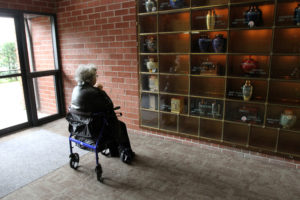
A 1963 Vatican instruction, “Piam et Constantem,” and subsequent clarifications, permitted Catholics to be buried in non-Catholic cemeteries and to be cremated, if cremation was not chosen as a denial of church teaching. The church retains a preference for burial over cremation and directs cremated remains to be buried or inurned at a cemetery.
According to canon law, Catholic cemeteries are to be blessed, designating them sacred ground. In keeping with the church’s “desires that every Catholic be buried in blessed ground,” non-Catholic cemeteries, where possible, should allow a separate Catholic section and that should be blessed. If there cannot be a Catholic section, an individual grave must be blessed before the body of the deceased is lowered into it.
Cemetery directors told Catholic News Service the selection of a cemetery is based on a family’s tradition and faith, proximity, cost and recommendation of a funeral director.
[quote_box_right]
An earthly death
Faith, hope and remembrance (Catholic Cemeteries of the Diocese of Rockville Centre)
Why choose a Catholic cemetery and mortuary? (Catholic Cemeteries and Mortuaries of the Diocese of Phoenix)
Understanding Catholic funerals (catholic Cemeteries of the Archdiocese of Newark)
Cremation (U.S. bishops)[/quote_box_right]Peter Ryan, director of Catholic Cemeteries for the Diocese of Rockville Centre, said there are approximately 12,000 funeral Masses in his diocese each year, but only 3,500 burials and internments in parish and diocesan cemeteries.
“A portion may choose a family plot outside the diocese, a veterans’ cemetery or a nonsectarian or municipal cemetery,” he said. “And some choose cremation and then leave Mom at home on the mantle until Dad goes, and then they bury them together.”
According to the Cremation Association of North America, a 100-year-old organization that tracks statistics, more than 43 percent of people who died in the United States in 2012 were cremated. The number is predicted to rise to 45 percent in 2017.
Cemetery directors said Catholics choose cremation at a slightly lower rate than the general population, but the number is significant and growing. Borrero said 12 percent of all interments in the four New York archdiocesan cemeteries in the past five years were of cremated remains.
Catholic cemeteries are developing more spaces for above-ground burial in community mausoleums and for cremated remains in wall niches and columbarium gardens. This is a challenge in older cemeteries where unused space is at a premium.
Funeral rites are prescribed in the Order of Christian Funerals, which includes a vigil service, or wake, the funeral liturgy and committal prayers at the cemetery.
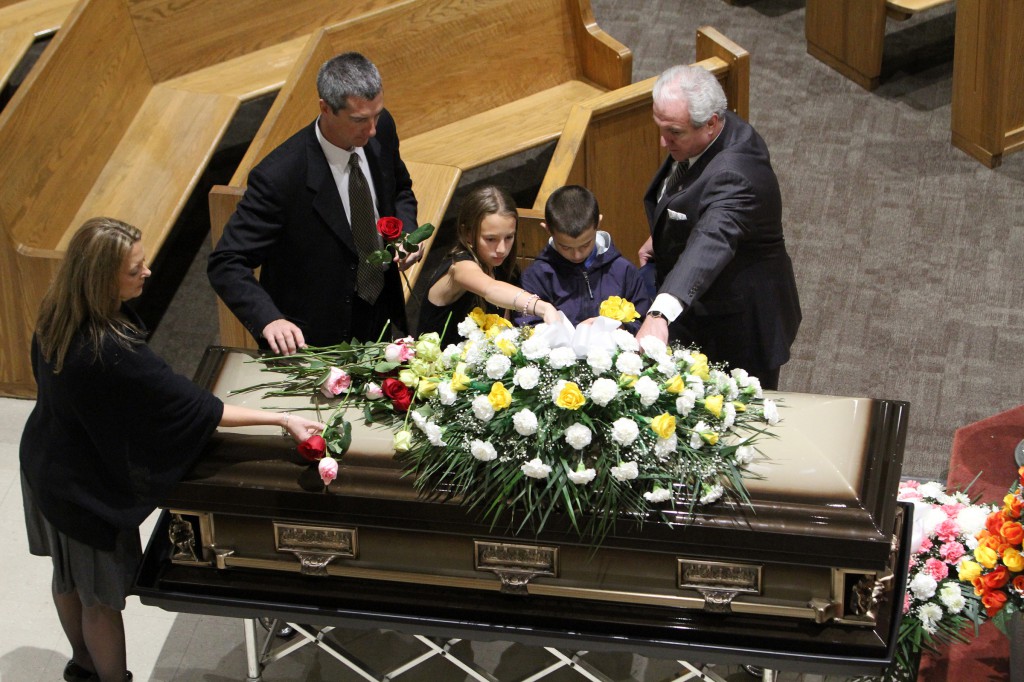
“The Order of Christian Funerals is designed to walk with the community and the ritual is a journey laid out for the mourners,” said Carol Giambalvo, director of Catholic Cemeteries for the Diocese of Rockford, Illinois, and immediate past president of the Catholic Cemetery Conference.
Ryan said the church needs a proper, well-defined tradition for cremation that would include the elements of the Order of Christian Funerals. Sometimes bodies are cremated before a funeral Mass and sometimes people approach the cemetery with cremated remains they inherited and want to bury, Ryan said.
According to the Cremation Association, approximately 50 percent of cremated remains are kept at home, scattered or not collected from crematoriums. Canon law forbids scattering and dividing cremated remains.
Giambalvo, who also is a grief counselor, said the grieving process stops if people take remains home. “People can’t move forward with their grief. When they finally bring the remains to the cemetery, they thank us,” she said.
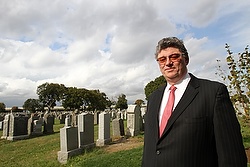
Catholic cemeteries are using advertising, social media, outreach coordinators, memorial Masses and public programs to reach potential clients. Since 1978, the Catholic Cemetery Conference has promoted Cemetery Sunday on the first Sunday of November as an occasion to pray for the dead and visit cemeteries.
Roman Szabelski, executive director of Catholic Cemeteries for the Archdiocese of Chicago, said, “A lot of people don’t realize we bless two places in our faith: the church and the cemetery.” In Chicago, the 16,000 people buried in the archdiocese’s 44 cemeteries each year are remembered at Masses and rosary services on Cemetery Sunday, Szabelski said and the dead are named in booklets distributed at each cemetery.
An outreach coordinator visits Chicago groups and residences to describe the value of the Order of Christian Funerals and promote a “womb to tomb” celebration of life in Jesus Christ, he said. Chicago cemeteries also host concerts of sacred music and allow tours of monuments, artwork and unique faceted glasswork.
Ryan said Rockville Centre cemeteries use Facebook and Constant Contact platforms, write to owners of cemetery plots, encourage recommendations and send subscriptions to the diocesan monthly magazine to all new clients.
Rockville Centre uses deacons to officiate at committal services when a parish priest cannot accompany a funeral. “Every person is buried with prayers offered by a member of the clergy. It’s a great way to put a good foot forward for the church,” Ryan said.
While many cemeteries are adding new burial and interment options, the Diocese of Albany was the first in New York state to offer a natural burial preserve, Kateri Meadow, dedicated in September, 2012 at Most Holy Redeemer Cemetery in Niskayuna. Maureen McGuinness, family services manager for Albany’s diocesan cemeteries, said the 20,000-square-foot wildflower site was named for St. Kateri Tekakwitha, patroness of the environment and ecology.
McGuinness said unlike traditional burials that entail wood or metal coffins, concrete burial vaults and memorial monuments, “green” burials use biodegradable wood coffins, burial shrouds and wicker baskets to promote natural decomposition. Inscribed burial markers are cobblestones reclaimed from a cemetery road. The meadow is mowed once or twice a year and abuts a traditional nature preserve that will not be developed.
McGuinness said early buyers in the 266-space area had a common concern for the environment, or a love for gardening and nature. They included an interfaith couple who otherwise would not have been allowed to be buried together in a place that accommodated both Catholic and Jewish traditions.
— By Beth Griffin, Catholic News Service.



